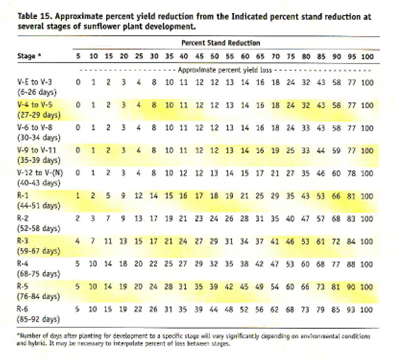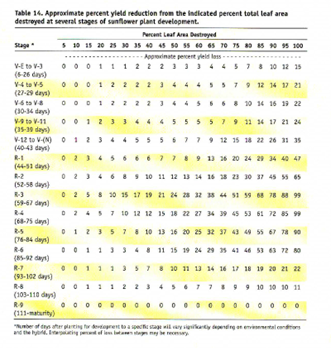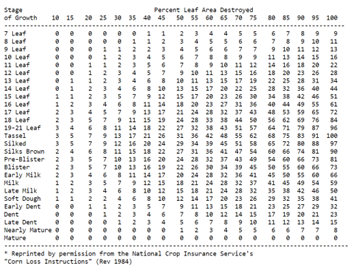Section Title
Spring hail evaluation on corn and sunflower
Crop Types
- Corn
- Sunflower
Unstable weather in Manitoba springs often yields severe storms producing hail. There is a major benefit of spring hail over summer/fall hail events, which is the ability of a crop to recover and have very little yield impact. There is no question that leaf destruction affects a plant’s ability to photosynthesize sunlight, but when that plant is still actively growing and in the early vegetative stages, there is an impressive ability to recover and to continue to produce new leaves, and quickly.
Sunflower Hail Evaluation
Every crop needs a few days grace following a hail event, to give it time to develop new leaves. There is no need to scout prior to 3-5 days following hail, though curiosity will almost certainly bring the farmer and/or their consultant to affected fields to assess damage. The premise behind waiting a few days is to give the crop time to recover from the stress and to determine if it will continue to send out new vegetative growth.
When scouting a sunflower (or any crop) field a few days after a severe hail event, bring a pen and paper for record-keeping. First, determine growth stage, then determine what length of a row is 1/1,000th of an acre:
In 10 spots in the affected field, measure out 1/1,000th of an acre and record the number of plants that will not recover. Then record the number of plants that have damage and what the percent leave area destroyed is; average out that number among affected, living plants. If there were originally 20 plants and one was completely destroyed by hail, plus three plants had 50 per cent defoliation and they were all V3, record this data. Now take that information and use the two tables below, courtesy of NDSU.
By losing one plant, stand is reduced by five per cent. View Table 15 and using the first row “V-E to V-3”, scan over to five per cent stand reduction, which is the first data point. It is determined that zero percent yield loss will be experienced from that individual plant that has succumbed to hail.
Secondly, view Table 14 to determine approximate yield loss from leaf area destroyed. Again, using the first row “V-E to V-3”, scan to 50 and match the column to the row to determine that only three per cent yield loss will be experienced from the defoliation in that section of field. Repeat this process 10 times, record the findings, the percent yield loss at each location and average the data.
Sunflowers are not a competitive crop, but plants will adapt to the loss of a neighbouring plant, just like other crops will do the same. Simply by viewing the two tables above, it is apparent that a lot of damage is needed to write a crop off and require a replanting plan.
Corn Hail Evaluation

Hail damage on corn.
Evaluation of hail damage in corn is very similar to sunflowers. Early season hail has very little effect on grain corn yield as vegetative growth is occurring rapidly and new leaves are emerging every few days. Following a hail event, wait 3 – 5 days and then do a full evaluation of the affected field(s) for damage assessment.
Determine growth stage of a grain corn crop. Most hail assessment tables use the leaf-over method for staging, rather than our typical leaf collar method. In this method, begin by finding the cotyledon, which will be the oldest leaf (closest to the ground level) and will have a rounded tip. This is Leaf 1. Next, determine the youngest, uppermost leaf whose tip points below a horizontal line (it is pointing slightly downward or more). Count from Leaf 1 up to this leaf to determine the leaf stage.
Next, use row spacing to determine how long to measure 1/1,000th acre:
In 10 spots in the affected field, measure out 1/1,000th of an acre and record percent leaf area destroyed by hail for each plant. When all recordings are complete, take an average of all data. Hail can be patchy, even on a small field, so there may be more damage to one area than others, which is good to make a specific note of. Match the crop stage to percent leaf area destroyed on the following table to determine estimated yield loss as a result of hail.
Hail events in the late vegetative stages and early reproductive stages can be devastating, as noted in the table below. At this time of year, it will be important to account for stalk and ear damage, not only for yield penalties, but for potential insect and disease damage later in the season.
















